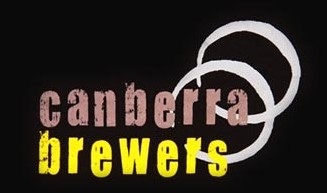No-Sparge Low-Gravity Brewing
By Mark Bilbrough
OK, I admit it, I like low gravity session beers. I can avoid the guilt of having a beer most nights, without feeling like I have a drinking problem. After spending a couple of years in Scotland, and another in England, I’ve developed a taste for Scottish Ales and Bitters.
The problem is my brew system does not work well with low gravity beers. Mashing in (even) at a very generous three litres/kg on a small beer leads to around ten litres of strike water, which is way too small in my 55-litre mash tun.
So after reading through John Palmer’s How To Brew (p186), having a little bit of a hunt on the Interweb, some playing with BeerTools Pro and my first experiment, I’ve come up with an easy way to do No-Sparge Low-Gravity brewing. You could do this the long way based just on John’s calculations, but I thought I’d use a combination of some simple maths and brewing software to shortcut and simplify the whole activity.
It is worth noting that Palmer gives an eight-step process for no-sparge mashing. I’ve taken just one of the steps to scale up the recipe, and then used BeerTools to manage the rest. Also his calculations are in imperial, which I’ve used (for ease of use) and just converted to metric on the inputs and outputs.
Standard Recipe
For this brew, I’m making a Scottish 70/- (3.4% alcohol) based on Jamil Zainasheff’s Brewing Classic Styles. In Australia, we don’t have all of the ingredients that he has access to, so I have tailored it to locally available ingredients. I get about 70% efficiency on my system.
3.2 kg Golden Promise [79%]
250g Munich 1 [5.6%]
440g Crystal 15L (I used German CaraMunich 1) [10.8%]
110g Crystal 120L (I used Dark Crystal) [2.6%]
90g Pale Chocolate Malt [2.1%]
22.3g East Kent Goldings (4.8% AA) @ 60 mins
Safale US-05 Dry Yeast
Pre-Boil Gravity 1.030, OG 1.037, Mash Temp 70°C
Scaling the Recipe for No Sparge
To scale the recipe for no sparge, you need to know your pre-boil volume and the mass of the grist. The formula is:
S = 4*Vb / (4*Vb – k*Gr)
Where:
S: Scale Up Factor
Vb: Pre-boil volume (in gallons)
k: Water Absorption factor of the grain
Gr: Weight of the grist (in pounds)
So for my recipe above, my pre-boil is 7 gallons, Palmer suggests absorption is 0.5 (quarts per pound) and my grist is close enough to 9 lbs (4.1 kg).
This gives me a scale up factor of 1.19: S = 4*7 (4*7 – 0.5*9)
So all I have to do is scale up the grist by a factor of 1.19: 9*1.19 = 10.7 lbs (4.85 kg).
Now I switch back to my standard recipe in BeerTools.
I lock in the final volume of the recipe, and scale the efficiency down until the grist of my brew comes out to 4.85. On my system this comes out to around 58%.
Mashing-In and Sparging
The No-Sparge in Palmer’s terms is an initial mash-in with around 50% of the water, 60 minutes rest, than a mash-out (or additional infusion) with the balance of the water, recirculate and lauter.
I manually dial in my 50/50 split of mash-in and infusion. I started with a mash-in infusion of 3 litres/kg and then play with the up/down arrows on both additions until I get a reasonable split. I’m happy with the 3.7 l/kg mash-in that I end up with. Also as it is a low gravity beer, I want a higher liquor/grist ratio to reduce fermentability and increase body.
Report Card
So how did I fare? I pretty well hit all of my numbers. After lautering I was a little over 1 litre short of pre-boil, and a point or two too high (I needed to hit 1.030 and got 1.032). I added some extra hot water and the gravity was right on. I put down the shortfall to my (brand new) mill which has a pretty coarse setting on it, and the grain absorbing slightly more water than Palmer suggests. How does it taste?… I’ll let you know in a couple of weeks.
If you have any questions on this process (noting that I am a journeyman), feel free to PM on the forum.
Cheers,
Billy

Thanks for posting your experiences. I am interested to read some tasting notes on how this batch turns out. I tried brewing Jamil’s recipe aiming for a 60 shilling. I had to make substitutions similar to yours but missed the gravity by a couple of points on the low side.